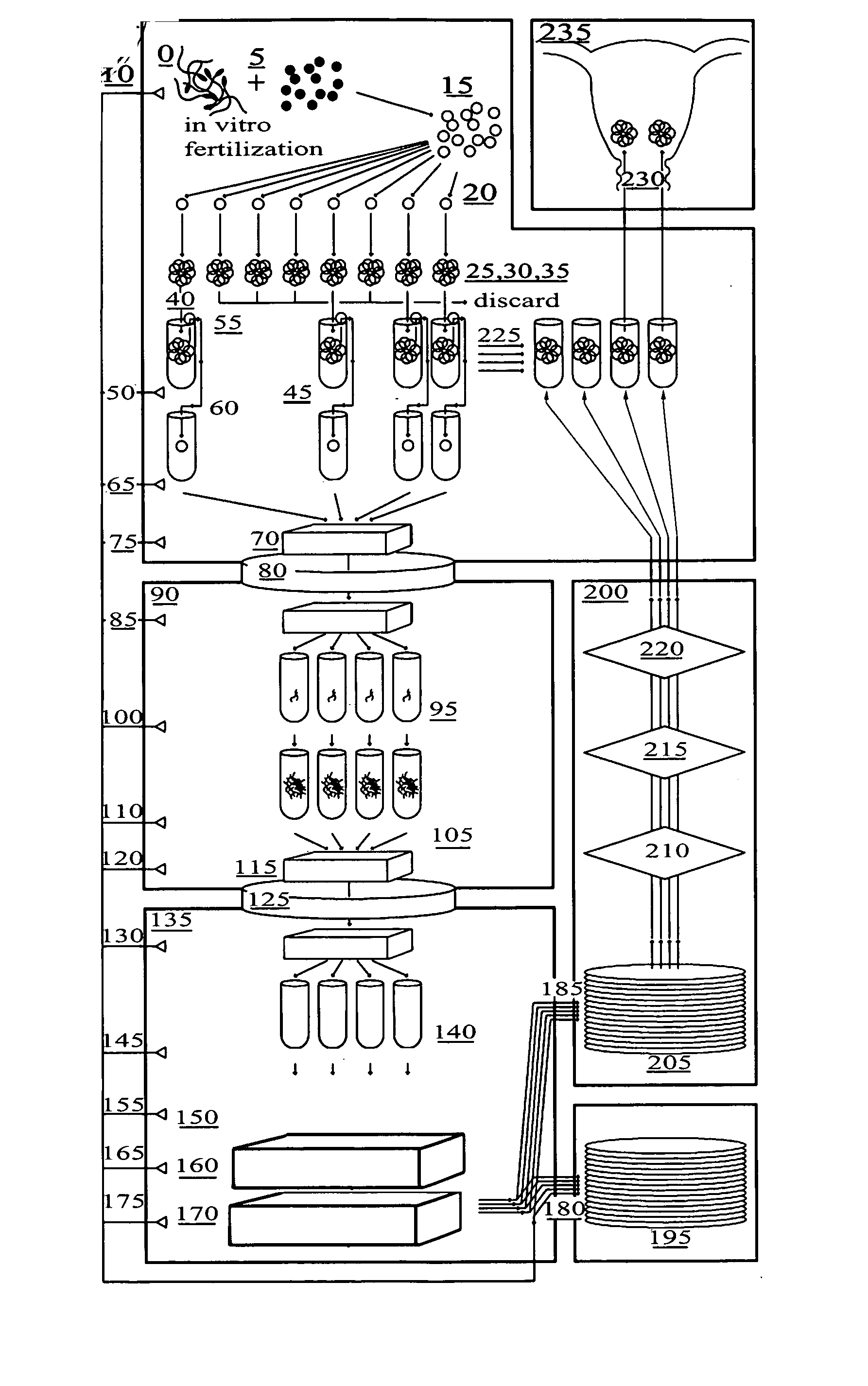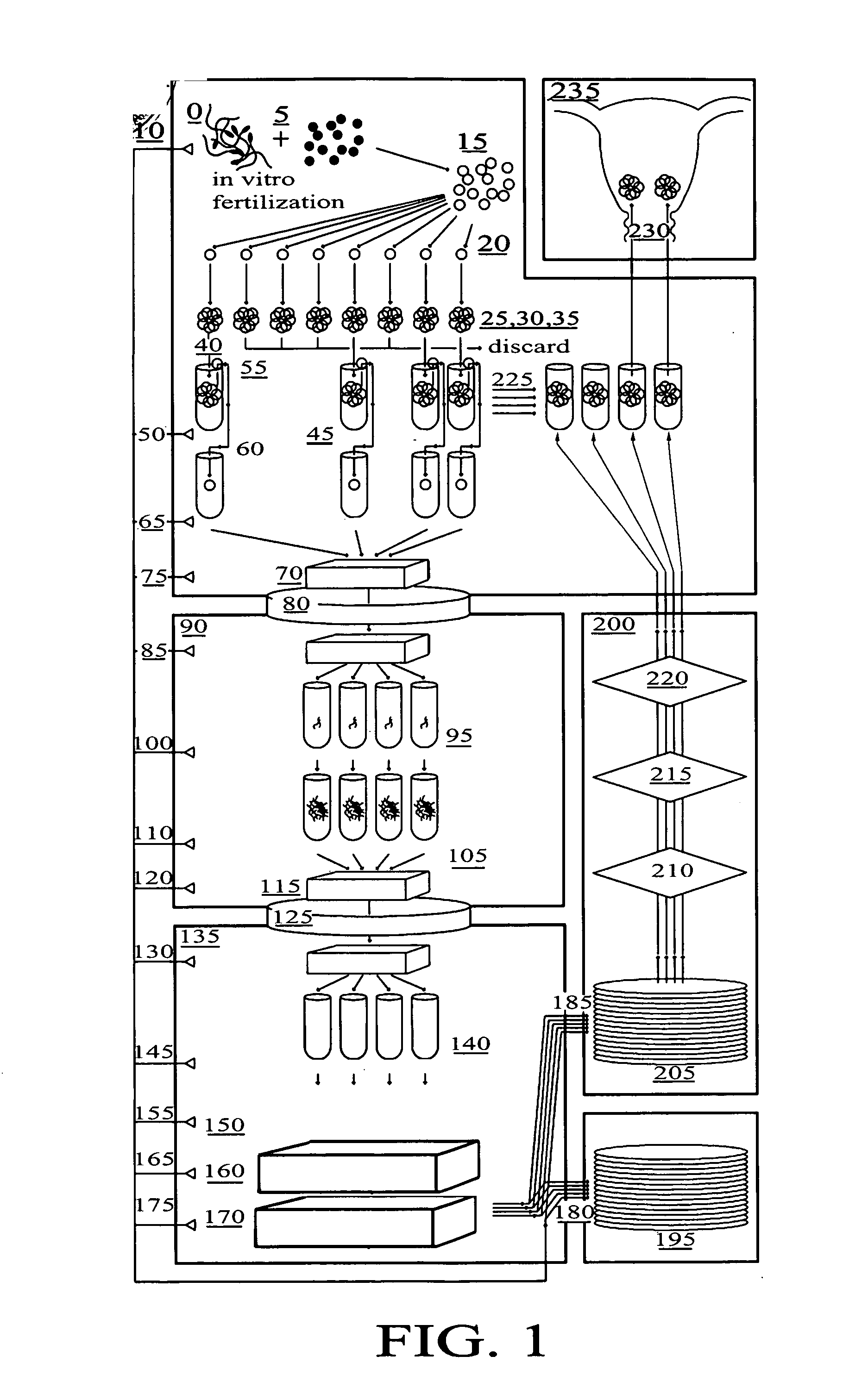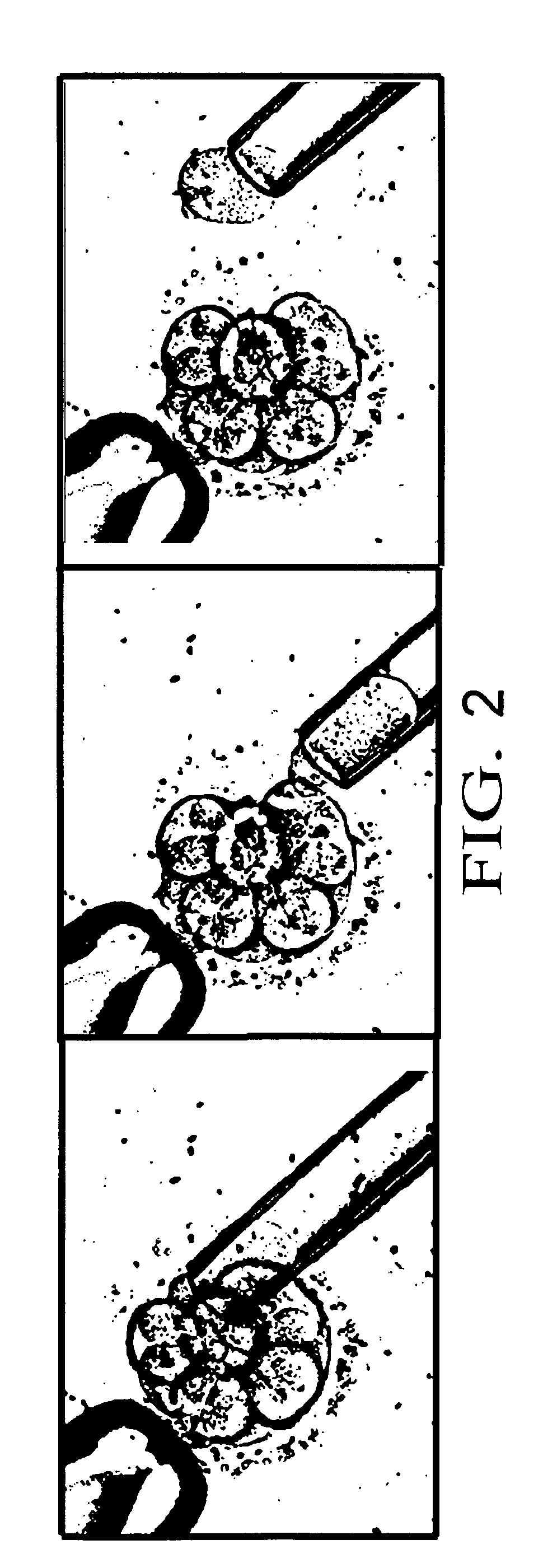Method for genetic testing of human embryos for chromosome abnormalities, segregating genetic disorders with or without a known mutation and mitochondrial disorders following in vitro fertilization (IVF), embryo culture and embryo biopsy
a technology of human embryos and chromosome abnormalities, applied in the field of human embryo genetic testing, can solve the problems of compromising embryo development and pre- and post-genome activation, poor standardization, and difficult technique for embryo culture and optimizing embryo growth and development, so as to reduce the significant risk of couples
- Summary
- Abstract
- Description
- Claims
- Application Information
AI Technical Summary
Benefits of technology
Problems solved by technology
Method used
Image
Examples
Embodiment Construction
[0064] The present invention is a method to optimize embryo grading, to provide a less invasive and contamination-free embryo biopsy protocol, to perform a modified and enhanced multiple displacement DNA amplification protocol and a modified microarray platform for preimplantation genetic analysis.
[0065] The novel concept of the present invention is the ability to reduce the subjectivity associated with embryo grading, to reduce potential damage to biopsied embryos and to eliminate exogenous cellular contamination, to amplify adequate amounts of DNA from single cells without exogenous DNA contamination and to perform genetic testing on single cells from embryos prior to transfer within an IVF setting.
[0066]FIG. 1 is a flow diagram of the method for in vitro fertilization (IVF) and genetic testing of human embryos according to the present invention, in which the following components are referenced as shown: [0067]0 Positive Pressure Embryology Laboratory [0068]5 In Vitro Fertilizat...
PUM
| Property | Measurement | Unit |
|---|---|---|
| temperature | aaaaa | aaaaa |
| temperature | aaaaa | aaaaa |
| temperature | aaaaa | aaaaa |
Abstract
Description
Claims
Application Information
 Login to View More
Login to View More - R&D
- Intellectual Property
- Life Sciences
- Materials
- Tech Scout
- Unparalleled Data Quality
- Higher Quality Content
- 60% Fewer Hallucinations
Browse by: Latest US Patents, China's latest patents, Technical Efficacy Thesaurus, Application Domain, Technology Topic, Popular Technical Reports.
© 2025 PatSnap. All rights reserved.Legal|Privacy policy|Modern Slavery Act Transparency Statement|Sitemap|About US| Contact US: help@patsnap.com



